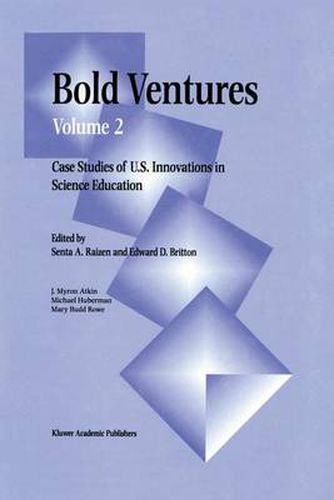Readings Newsletter
Become a Readings Member to make your shopping experience even easier.
Sign in or sign up for free!
You’re not far away from qualifying for FREE standard shipping within Australia
You’ve qualified for FREE standard shipping within Australia
The cart is loading…






This title is printed to order. This book may have been self-published. If so, we cannot guarantee the quality of the content. In the main most books will have gone through the editing process however some may not. We therefore suggest that you be aware of this before ordering this book. If in doubt check either the author or publisher’s details as we are unable to accept any returns unless they are faulty. Please contact us if you have any questions.
This book presents comprehensive results from case studies of five innovations in science education that have much to offer toward understanding current reforms in this field. Each chapter tells the story of a case in rich detail, with extensive documentation, and in the voices of many of the participants-the innovators, the teachers, the students. Similarly, Volume 3 of Bold Ventures pre sents the results from case studies of five innovations in mathematics education. Volume 1 provides a cross-case analysis of all eight innovations. Many U.S. readers certainly will be very familiar with the name of at least one if not all of the science innovations discussed in this volume-for example, Project 206l-and probably with their general substance. Much of the education community’s familiarity with these arises from the projects’ own dissemination efforts. The research reported in this volume, however, is one of the few detailed studies of these innovations undertaken by researchers outside the projects them selves. Each of the five studies was a large-scale effort involving teams of researchers over three years. These teams analyzed many documents, attended numerous critical project meetings, visited multiple sites, conducted dozens of individual interviews. The team leaders (Atkin, Huberman, Rowe), having spent much time with science education over long careers, looked at these innovations through many lenses. It was a daunting task for each team to sift through the mountains of detail in order to bring the most compelling themes to the surface.
$9.00 standard shipping within Australia
FREE standard shipping within Australia for orders over $100.00
Express & International shipping calculated at checkout
Stock availability can be subject to change without notice. We recommend calling the shop or contacting our online team to check availability of low stock items. Please see our Shopping Online page for more details.
This title is printed to order. This book may have been self-published. If so, we cannot guarantee the quality of the content. In the main most books will have gone through the editing process however some may not. We therefore suggest that you be aware of this before ordering this book. If in doubt check either the author or publisher’s details as we are unable to accept any returns unless they are faulty. Please contact us if you have any questions.
This book presents comprehensive results from case studies of five innovations in science education that have much to offer toward understanding current reforms in this field. Each chapter tells the story of a case in rich detail, with extensive documentation, and in the voices of many of the participants-the innovators, the teachers, the students. Similarly, Volume 3 of Bold Ventures pre sents the results from case studies of five innovations in mathematics education. Volume 1 provides a cross-case analysis of all eight innovations. Many U.S. readers certainly will be very familiar with the name of at least one if not all of the science innovations discussed in this volume-for example, Project 206l-and probably with their general substance. Much of the education community’s familiarity with these arises from the projects’ own dissemination efforts. The research reported in this volume, however, is one of the few detailed studies of these innovations undertaken by researchers outside the projects them selves. Each of the five studies was a large-scale effort involving teams of researchers over three years. These teams analyzed many documents, attended numerous critical project meetings, visited multiple sites, conducted dozens of individual interviews. The team leaders (Atkin, Huberman, Rowe), having spent much time with science education over long careers, looked at these innovations through many lenses. It was a daunting task for each team to sift through the mountains of detail in order to bring the most compelling themes to the surface.